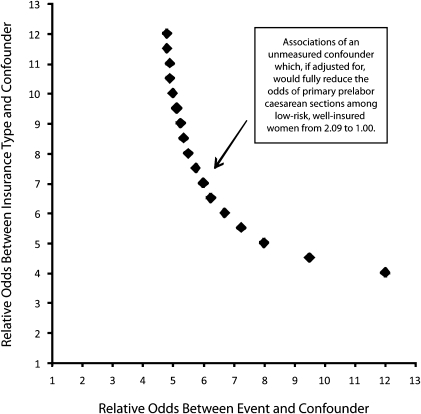FIGURE 1.
Sensitivity analysis for the strength of unmeasured confounding sufficient to fully explain observed association between insurance type and prelabor cesarean delivery in lowest-risk women: New Jersey, 2004–2007.
Note. HMO = health maintenance organization. The analysis assumed hypothetical binary unmeasured confounder with prevalence of 40% among well-insured women and plotted combinations of strengths of association (between the confounder and the outcome of prelabor cesarean delivery and between the confounder and the exposure of commercial, HMO, and BlueCross insurance) that would be sufficient to fully explain the observed association between insurance and prelabor cesarean delivery among 185 828 women without prior cesarean delivery and without any of 26 maternal, fetal, and placental conditions coded as diagnoses during hospital admission. The analysis aggregated 38 400 women with Medicaid or self-pay primary insurance, of whom 326 (0.85%) underwent a prelabor cesarean delivery, and 147 428 women with commercial HMO, BlueCross, or commercial primary insurance, of whom 2591 (1.76%) underwent a prelabor cesarean delivery, yielding an odds ratio of 2.09 for the event.

